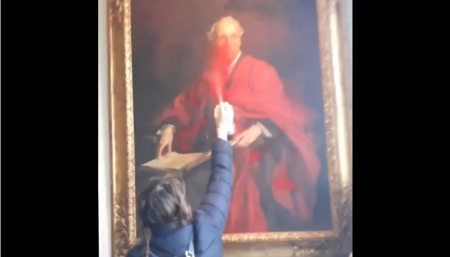Army Afire: How the US Army Confronted Its Racial Crisis in the Vietnam Era by Beth Bailey, University of North Carolina Press, 360 pages
On July 20, 1969, Corporal Edward E. Bankston was walking back to his barracks at Camp Lejeune in North Carolina when he was beaten to death by a mob of thirty to forty black and Puerto Rican Marines wielding broken broom handles and tree branches. The mob had set out earlier that night from a dance at the service club where scuffles over minor racial incidents, such as a black Marine breaking in on a white Marine dancing with a black woman, produced an atmosphere of tension that caused the club manager to call the police. After leaving the club around 10:30 p.m., the group of mostly black Marines roamed the base beating up white personnel at random, shouting, “We’re gonna mess up some beasts tonight.” Cpl. Bankston had been wounded three times in Vietnam.
Most histories of military integration end with Harry Truman’s Executive Order 9981 in 1948 or the integration of the last segregated unit in 1954. Historian Beth Bailey takes this as her starting point. Her subject in Army Afire is the three decades that followed, when the military struggled to cope with the challenges of its new policy.
Bailey opens with a litany of incidents that give the reader an idea of the nature and scale of the problem:
On August 23, 1968, between sixty and 100 black soldiers at Fort Hood announced their refusal to be deployed for anti-riot duty at the Democratic National Convention in Chicago. “The people we are supposed to control, the rioters, are probably our own race,” one said. “We shouldn’t have to go out there and do wrong to our own people.”
On August 29, 1968, Long Binh Jail, a U.S. military prison in Vietnam, erupted in a weeks-long riot that destroyed several buildings and left the commanding officer so badly beaten that he soon took medical retirement. One white inmate, Private Edward Haskett, was beaten to death with a shovel. The prison had been built to house 400 inmates but at the time housed over 700, the vast majority of them black. The part of the stockade where the rebellious prisoners holed up was declared the “Soul Brothers Compound.” One participant later recalled, “We used the blankets to make African robes and the tent poles for spears.”
On October 14, 1968, Major Lavell Merritt staged an unofficial press conference in Saigon where he denounced the Army as racist and distributed a written statement detailing his grievances. “Army Denounced by Negro Major,” reported the New York Times. An investigation revealed that Major Merritt had become obsessive on the subject of race, interrogating his white subordinates about their hidden prejudices. He was forcibly retired in January 1969.
On May 21, 1970, a grenade was hurled through the window of the mess hall at Hohenfels training ground near Augsburg, Germany, after the commanding officer had refused to meet with a mob of forty to fifty black soldiers who demanded to air their grievances. An unexploded Molotov cocktail was found on the ground outside, as well as a truck with a burning broom handle stuck in its diesel tank.
Bailey spins these incidents (and there were many more) as protests. It is a stretch. Major Merritt, for example, was clearly a crank. The written statement he distributed to the press contained gratuitous sexual insults directed at the “seventy-five percent” of white officers who were raised by “mammy who was also his fathers [sic] mistress.” Subordinates told investigators that Merritt’s constant racial badgering included his claim that “once a white woman had a negro she would never go back to a white man.”
Bailey insists that the senseless death of Cpl. Bankston must be seen in the light of rising racial tensions at Camp Lejeune. She repeats, rather irresponsibly, a rumor than white Marines had beat a black man to death the year before and never been prosecuted. The source of this rumor is a LIFE magazine article from 1969 that says the author heard about it from black Marines, who gave no further details except that the man’s death was “attributed to natural causes” by authorities.
Searching Bailey’s book for verified incidents where white servicemen were the aggressors, one finds only a handful of cases. “In 1970, at Fort Carson, Colorado, a white soldier—working part-time as a filling station attendant—murdered the head of the local university’s Black studies program,” she writes. Bailey omits the relevant details: Roosevelt Hill Jr. was filling up his car with gas when Ellis L. Little of Kentucky called to check the validity of his credit card, which was a type Little did not recognize. A passenger in Hill’s car suggested Little might be calling the police, so Hill rushed into the station and attacked him, shouting obscenities. With Hill’s hands around his neck, Little drew a gun from a drawer and shot him in the chest. A grand jury declined to charge Little with any crime.
Germany was a hotbed of racial violence in the 1970s, with soldiers afraid to go out at night due to rampant attacks, but it is hard to determine exactly what were the grievances at issue. “White soldiers were being randomly attacked under cover of darkness,” Bailey writes. “Black soldiers had taken to carrying intimidating ‘soul sticks’ on base, cutting to the front of the mess hall line, blatantly ignoring regulations.” More than 1,000 crimes of violence by black soldiers against whites were reported in Germany in the first nine months of 1971. If this was a protest, what were they protesting?
Disparities in punishment was the complaint cited most frequently. Black soldiers were 14 percent of U.S. troops in Germany but received 80 percent of prosecutions for serious crimes, such as robbery, assault, and rape. One report found 2,984 crimes of violence by black soldiers during a period when white soldiers committed 740. Bailey does not consider the possibility that this reflected reality rather than prejudice. “It is likely true,” she writes, “that white crime was less frequently reported than crimes committed by African Americans.”
In truth, the Army was not hostile to black servicemen. If anything, it was the opposite. Major General Frederic Davison, the first black soldier to reach that rank, admitted in 1974 that problems in Germany were partly because “some of these white commanders are too scared of black soldiers to enforce discipline.” When the German papers reported a flurry of crimes against civilians by black soldiers (including the gang rape of a 16-year-old German girl), the American brass persuaded the German press council to stop reporting servicemen’s race. During the investigation into Major Merritt’s mental breakdown, one white officer told the inspector general’s panel that he had not confronted Merritt with his concerns about morale on the base because he was self-conscious about being from the South. “A major from Alabama and a negro officer… You know what I mean,” he said. “I just didn’t want to let this appear to be a racial issue.”
Bailey’s book is the most comprehensive study yet published on military race relations during this period, and it is worth asking why no scholar ever took up this subject before. The reason is that it is embarrassing. The U.S. Navy prides itself on having never had a mutiny. The race riot that took place on board the USS Kitty Hawk in 1972, where black sailors roamed the passageways beating white sailors with wrenches and pipes, must be downplayed in order to preserve that record. The black soldiers who made German bases such a hell cannot easily be depicted as civil rights heroes by even the most politically motivated historian. They were men like Sgt. James Hobson, the ringleader of the grenade incident, who had been a gang leader on Chicago’s West Side under the street name “Caveman.”
The military was constantly held up during the civil rights era as an example of successful integration. President John F. Kennedy boasted in 1963, “The military services lead almost every other segment of our society in establishing equality of opportunity for all Americans.” It was a powerful talking point: The military ordered an end to racism, and racism ended; soon no one could even remember what the fuss was about; why can’t the rest of America do the same? If it turned out that problems of race relations remained even after overt acts of prejudice had been prohibited, it would undermine liberalism’s case for further concessions.
There is another aspect to the armed forces’ role in liberal rhetoric as a racial success story. The military has a uniquely high degree of control over its members. It can dictate how they dress, where they eat, everything down to the smallest personal interaction. If only we had that kind of control over regular Americans, the implication goes, we could eradicate those last lingering remnants of racism and solve the problem as successfully as the military has, from the top down. The left gets closer every year to having that kind of power over ordinary Americans, who now justifiably fear legal and social punishment for even minor violations of racial political correctness. Alas, as the history in Army Afire shows, they may end up with all of the control they hope for but not the success.
Read the full article here














